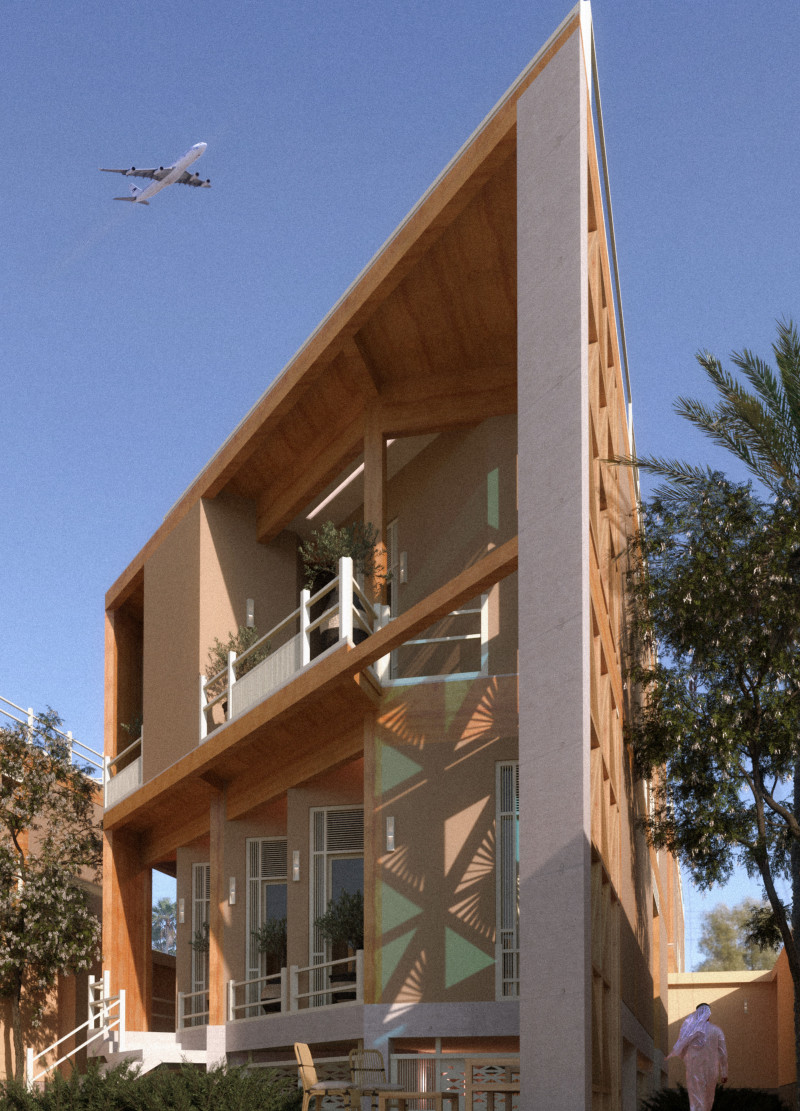5 key facts about this project
From the outset, the project exhibits a contemporary architectural approach that respects its geographical location, incorporating elements that resonate with the local architectural language while embracing modern design principles. The building's exterior façade is composed of a rich palette of materials, including reinforced concrete, glass, and sustainably sourced timber. This combination not only enhances the visual appeal but also ensures durability and energy efficiency, aligning with contemporary sustainability practices. The use of large glass panels facilitates natural light penetration, creating a welcoming ambiance within the interior spaces and blurring the line between indoors and outdoors.
The layout of the project is meticulously planned, with a series of interconnected spaces that encourage movement and interaction among users. Key areas include open communal gathering spaces, flexible meeting rooms, and localized service areas designed to accommodate a variety of activities. Each functional space is thoughtfully designed to maximize usability while ensuring comfort and aesthetic coherence. The strategic placement of these areas promotes a sense of community, inviting both residents and visitors to engage with the space.
A noteworthy aspect of this architectural design is the emphasis on green building practices. The project incorporates various sustainable design strategies, such as rainwater harvesting and the installation of green roofs. These initiatives not only reduce the building's ecological footprint but also contribute to the overall aesthetic landscape. The integration of planting areas and native vegetation into the site's design enhances biodiversity and establishes a harmonious connection to the environment, further reinforcing the project’s commitment to ecological stewardship.
Unique design approaches can be observed in the way the project employs passive solar strategies to enhance energy efficiency. Large overhangs provide shading during the hotter months, while the building's orientation optimizes solar gain during the winter. Additionally, the use of thermal mass through carefully selected materials aids in regulating indoor temperatures, resulting in reduced reliance on mechanical heating and cooling systems.
The architectural design of this project reflects a deep understanding of its cultural and environmental context, celebrating local materials and construction techniques. Craftsmanship is evident in the detailing of architectural features, such as joinery and articulation of transitions between different materials, which adds a layer of sophistication to the design. This attention to detail not only elevates the architectural quality but also fosters a sense of identity within the community.
In summary, this project stands out for its thoughtful approach to design, merging functionality with sustainability while maintaining strong ties to the surrounding environment. The combination of innovative design strategies and consideration for community needs positions this project as a forward-thinking contribution to modern architecture. For those interested in exploring further, reviewing the architectural plans, sections, and designs can provide a more in-depth understanding of the project's intricate details and architectural ideas. The project invites readers to engage with its narrative, exploring how it redefines the boundaries of contemporary architecture while serving the community effectively.


























